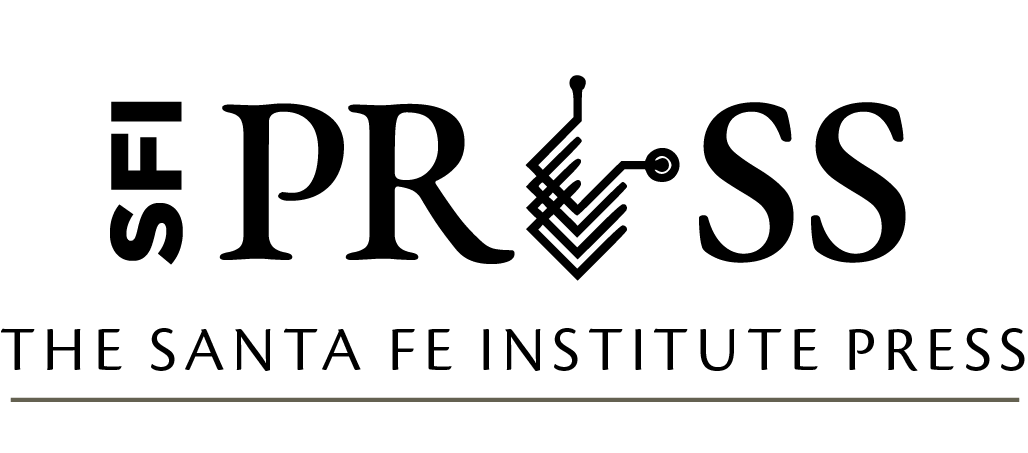The Energetics of Computing in Life & Machines pp 383-403
DOI: 10.37911/9781947864078.14
14. Physical Limitations of Work Extraction from Temporal Correlations
Authors: Elan Stopnitzky, University of Hawai’i; Susanne Still, University of Hawai’i; Thomas E. Ouldridge, Imperial College London; and Lee Altenberg, University of Hawai’i
Excerpt
Introduction
Leo Szilard proposed a simple Gedankenexperiment almost ninety years ago to resolve the paradox of Maxwell’s demon, arguing that information about a system could be converted to work by an automated mechanism in place of a sentient being (Szilard 1929). Szilard’s proposed information engine cyclically repeats two distinct phases: first, acquiring information and recording it into a stable memory, and then using this information to extract work with a given mechanism. This allowed him to compute a bound on the costs associated with acquiring and recording information, necessary to prevent a violation of the Second Law (Szilard 1929). Many extensions to Szilard’s engine have been explored in the literature (e.g., Zurek 1986; Jeon and Kim 2016; Marathe and Parrondo 2010; Kim et al. 2011; Vaikuntanathan and Jarzynski 2011), and modern formulations of nonequilibrium thermodynamics naturally incorporate correlations as a potential source of work (see, e.g., Esposito and Van den Broeck 2011).
Much recent interest has nonetheless focused on the information utilization side by building on the idea of a device that exploits a data-carrying tape to extract work from a single heat bath (Mandal and Jarzynski 2012). Such a device advances along a sequence of 0s and 1s that contains an overall bias toward either 0 or 1. The device couples to one input bit at a time and, while in contact with the bit, undergoes free-running dynamics that can alter the bit. This interaction increases the entropy of the tape upon output of the changed bit, and it is this entropy increase that is used to compensate for the entropy decrease of the heat bath. Extensions of these machines exploit statistical information within the tape in the form of temporal correlations (Boyd, Mandal, and Crutchfield 2017), or spatial correlations between tapes (McGrath et al. 2017), rather than an overall bias in the input bits. The resulting simple dynamical models of all these proposals help develop a concrete physical understanding of the role information plays in thermodynamics. To serve this purpose, it is important that these devices be physically realizable.
Real physical systems have underlying time-continuous dynamics. Moreover, whenever the work extraction device is designed to operate without a time-dependent, externally applied driving protocol during the periods of interaction with an individual bit, the time-continuous dynamics must also be time homogeneous and obey detailed balance to be physical.
Bibliography
Bordenave, C., P. Caputo, and D. Chafai. 2011. “Spectrum of Large Random Reversible Markov Chains: Heavy-Tailed Weights on the Complete Graph.” Annals of Probability 39, no. 4 (July): 1544–1590.
Boyd, A. B., D. Mandal, and J. P. Crutchfield. 2017. “Correlation-Powered Information Engines and the Thermo-dynamics of Self-Correction.” Physical Review E 95 (1): 012152.
Esposito, M., and C. Van den Broeck. 2011. “Second Law and Landauer Principle Far from Equilibrium.” Europhysics Letters 95 (4): 40004.
Gallager, R. G. 2012. Discrete Stochastic Processes. Vol. 321. New York: Springer Science & Business Media.
Jeon, H. J., and S. W. Kim. 2016. “Optimal Work of the Quantum Szilard Engine under Isothermal Processes with Inevitable Irreversibility.” New Journal of Physics 18 (4): 043002.
Jia, C. 2016. “A Solution to the Reversible Embedding Problem for Finite Markov Chains.” Statistics and Probability Letters 116 (Supplement C): 122–130.
Kim, S. W., T. Sagawa, S. De Liberato, and M. Ueda. 2011. “Quantum Szilard Engine.” Physical Review Letters 106 (7): 070401.
Landauer, R. 1961. “Irreversibility and Heat Generation in the Computing Process.” IBM Journal of Research and Development 5 (3): 183–191.
Mandal, D., and C. Jarzynski. 2012. “Work and Information Processing in a Solvable Model of Maxwell’s Demon.” Proceedings of the National Academy of Sciences of the United States of America 109 (29): 11641–11645.
Marathe, R., and J. M. R. Parrondo. 2010. “Cooling Classical Particles with a Microcanonical Szilard Engine.” Physical Review Letters 104 (24): 245704.
McGrath, T., N. S. Jones, P. R. ten Wolde, and T. E. Ouldridge. 2017. “Biochemical Machines for the Interconversion of Mutual Information and Work.” Physical Review Letters 118 (2): 028101.
Proesmans, K., B. Cleuren, and C. Van den Broeck. 2016. “Power–Efficiency–Dissipation Relations in Linear Thermodynamics.” Physical Review Letters 116 (22): 220601.
Szilard, L. 1929. “Über die Entropieverminderung in einem thermodynamischen System bei Eingriffen intelligenter Wesen.” Zeitschrift für Physik 53 (11–12): 840–856.
Vaikuntanathan, S., and C. Jarzynski. 2011. “Modeling Maxwell’s Demon with a Microcanonical Szilard Engine.” Physical Review E 83 (6): 061120.
Van den Broeck, C., et al. 2013. “Stochastic Thermodynamics: A Brief Introduction.” Phys. Complex Colloids 184:155–193.
Wolpert, D. H., A. Kolchinsky, and J. A. Owen. 2017. “The Minimal Hidden Computer Needed to Implement a Visible Computation.” arXiv1708:08494.
Zurek, W. H. 1986. “Maxwell’s Demon, Szilard’s Engine and Quantum Measurements.” In Frontiers of Nonequilibrium Statistical Physics, 151–161. New York: Springer.
